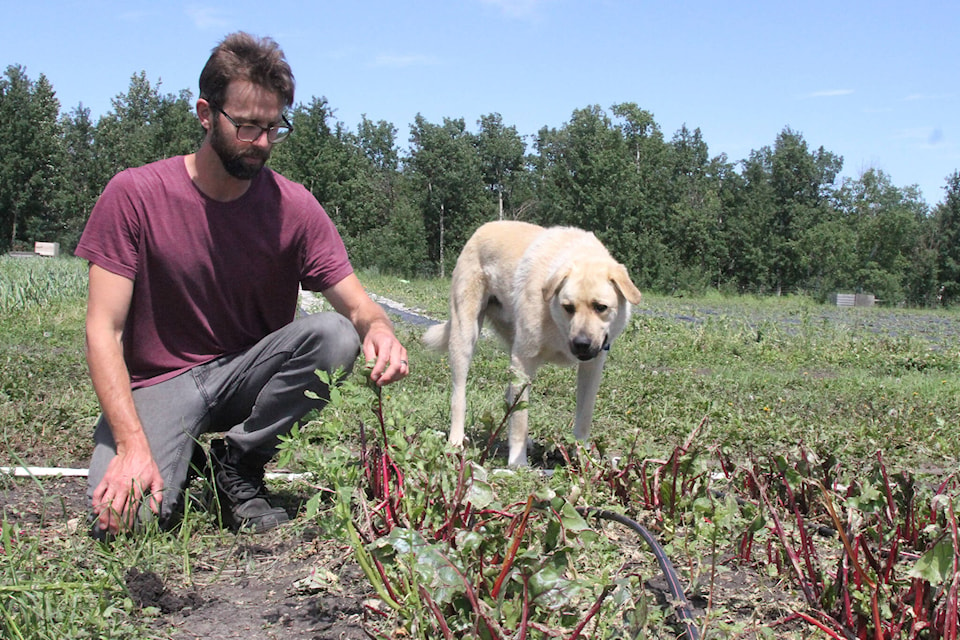This year’s hail season was a mix of humdrum and “Holy Cow.”
The number of damage claims is on the low side but there was plenty of drama, including a record-breaking ice bomb that landed near Markerville.
Agriculture Financial Services Corporation’s (AFSC) Jesse Cole said over the last 20 years they have handled about 7,100 hail damage claims a year on average.
So far, this year about 6,100 applications for insurance relief have come in.
“So, we’re actually below average,” said Cole, who is AFSC manager of insurance products and product innovation.
“Part of that is we were fairly dry in May. We got a lot of moisture in June but we didn’t get those hailstorm conditions. It was fairly cool,” he said on Wednesday. “We started to see more claims in July and into August.
“(Claims) are starting to trail off so I think we’re heading for a less-than-average year.”
RELATED:
Red Deer County farm hit hard by hail
About 1.8 million acres of crops have been damaged by hail so far, slightly below the five-year average of 1.9 million acres.
However, the damage measured in dollars is well above average, largely because high commodity prices made crops more valuable.
Over the last five years, AFSC paid out about $260 million in hail claims on average, compared with $350 million so far this year, claims still coming in.
Alberta is known as Canada’s hail magnet with by far the most damage occurring in this province.
“In Alberta, hail is our biggest peril. It causes a lot of strife,” he said. The province’s hail belt is generally considered to run from south of Calgary to Lacombe County.
Based on AFSC’s claims records, there is no indication it is getting worse.
“We haven’t really seen an uptick in hailstorm activity in the last 20 years. It isn’t noticeable in the data,” he said. “(Hail) just always kind of happens.”
RELATED:
Record hailstone falls near Markerville
Although the summer hail may not have done as much widespread damage as in past years, Mother Nature produced some dramatic storms that lit up social media and grabbed headlines.
An Aug. 1 storm had Highway 2 drivers scrambling to get off the road and find shelter under overpasses after a bombardment of baseball-sized hailstones dented vehicles and smashed out windshields. A Red Deer man caught in the storm said the impact from hailstones sounded like gunfire.
Near Markerville, a 292.71-ounce hailstone, roughly the size of a DVD box, fell on the same day, setting a Canadian record for biggest hailstone discovered.
A number of market garden farms in central Alberta, including The Jungle Farm, north of Innisfail, and Steel Pony Farm, just south of Red Deer, were both hammered by hail. The Jungle Farm’s owner called it the worst hailstorm in 20 years.
Of course, the crop insurance story has been about more than hail in recent years.
Last year’s drought helped pushed claim payouts for all causes to $2.7 billion, compared with the annual 2016-20 average of $600 million a year.
In Alberta, severe droughts seem to happen every 20 years or so,” said Cole. There was a bad year in 2002 and, before that, 1988.
This year, enough rain came for many farmers and yields are expected to be at least above the five-year average and possibly the 10-year-average.
